Is there a Googol of anything in the Universe?
Are vegetables intelligent? Is Pi a "normal" number? Are humans the only picky eaters? We take on your science questions, including why women generally don't go bald and how fingers can feel cold even though they're warm to the touch. Plus, we're joined by Matt Parker, the Stand Up Mathematician, who takes on your mathematical brain teasers, and explains how a simple mathematical trick can let you predict the numbers on a barcode!
In this episode
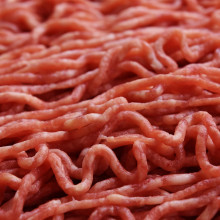
Why does red meat turn white with cooking?
Ginny Smith cooked up an answer to this culinary question...
Ginny - When you think about meat, it's made of protein and when protein is heated, the shape of it changes. Normally, it's quite a long molecule. But, as it's heated, it actually shrinks. So, if you imagine cooking a chicken breast, you see that as it cooks, it gets smaller and it also changes colour and this is because of the change in the proteins. We say they denature and that's when they go white and they scrunch up and shrink. Red meat contains an iron-rich chemical called "myoglobin" which also changes its shape when it cooks and changes colour from red when it's raw to sort of brownish grey when it's fully cooked.
If you're cooking red meat, sometimes you get a lovely brown colour on the outside and that really tasty meat smell that always makes you hungry. This happens because there's something called the maillard reaction. This is a chemical reaction between the amino acids found in the protein and some sugars, and it requires heat to occur. So, the temperature has to get up to about 154 degrees for the maillard reaction to occur and obviously, this is higher than the boiling point of water. So that means that if there's too much water in your meat or if your pan isn't hot enough, this browning won't occur. Your meat instead will cook in the water and it will just turn to light brownish grey colour, without you getting any of that lovely, crispy brown outside.
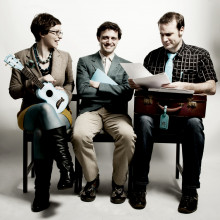
02:58 - Stand Up Maths and the Festival of the Spoken Nerd
Stand Up Maths and the Festival of the Spoken Nerd
with Matt Parker, Festival of the Spoken Nerd
Matt Parker, the stand-up mathematician joins us this week! He's currently on tour promoting a light-hearted view of science and maths as part of the
Festival of the Spoken Nerd. Hello Matt, tell us a little bit about you...
Matt - As you've mentioned, I sit in a middle of a very weird Venn diagram. I work doing proper maths communication, so I'm based at Queen Mary University of London in the maths department, but I also work doing stand-up comedy. And so, this tour is a combination of both those things. We get to do maths live on stage for comedy audiences.
Chris - The two wouldn't normally be regarded as good bed fellows.
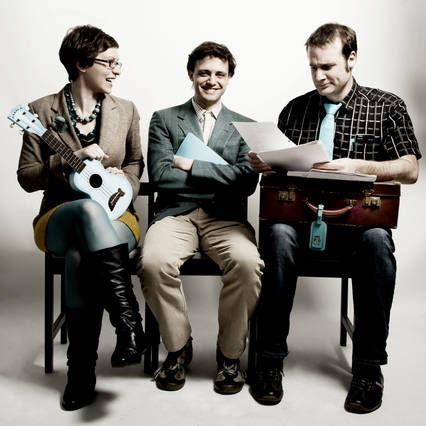 Matt - No and we're very excited that we actually get to take this on a tour because we started just doing a monthly night in London where there were 3 of us - myself, and other stand-ups Steve Mould and Helen Arney. We began just doing the really nerdy comedy and experiments, and music that we enjoy. And people started to show up to watch it, and we gradually got bigger and bigger audiences, and we started selling out bigger venues. And now, we're being taken on a 22-date tour all across the UK.
Matt - No and we're very excited that we actually get to take this on a tour because we started just doing a monthly night in London where there were 3 of us - myself, and other stand-ups Steve Mould and Helen Arney. We began just doing the really nerdy comedy and experiments, and music that we enjoy. And people started to show up to watch it, and we gradually got bigger and bigger audiences, and we started selling out bigger venues. And now, we're being taken on a 22-date tour all across the UK.
Chris - For the first time.
Matt - Yeah, this is it. So, this is our first ever tour. We're going out, bringing live nerdery to the people.
Chris - Who comes along and listens to maths comedy?
Matt - Well, we try to be very inclusive. We do obviously attract a wide spread with some extreme values of nerds. So hard-core nerds show up and believe me, there is something in there for them, but they tend to also bring friends, partners and members of their family who are not as nerdy. And so, we've worked very hard to make sure that this is also a legitimate comedy show. So you can come, you can enjoy the show without having got a very good 'A' level in maths.
Chris - Or with a very bad 'A' level. How do you actually make maths funny? Tell us a bit about the content of the show, what sorts of things do you discuss?
Matt - We try, in this show, to do all the sciences. We try to do a little bit of physics, so we've got a flame tube which is this flame "graphic equaliser" and we can put different frequencies into it and it responds different ways. I will be solving a Rubik's cube live on stage. I'll also be doing a very dangerous experiment. I'm recreating one of Michael Faradays' experiments from the Royal Institution where I'm using parabolas to set things on fire. So, it's just all our favourite nerdy things that we can do on stage, occasionally involving fire.
Chris - Now listeners who are listening very carefully may have noted that you don't sound local. So how do you come to be here doing this because you're originally from Australia, aren't you? Western Australia?
Matt - Yes, I do strange things to vowels. I'm from Perth originally where I studied and went to the University of Western Australia, where I did physics, and then went on to do maths, and after that, I became a secondary maths teacher. I moved to London about 8 years ago to teach maths and I've gradually shifted from being a normal - I use the word 'normal' carefully - maths teacher in schools into working part-time for a university and also doing comedy part-time.
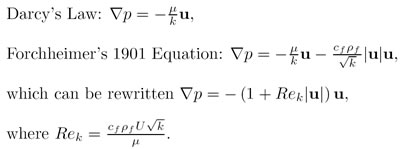 Chris - It's quite brave of Queen Mary University of London to say, "let's actually make a job around this sort of thing."
Chris - It's quite brave of Queen Mary University of London to say, "let's actually make a job around this sort of thing."
Matt - Queen Mary have been incredibly supportive. So, I'm their public engagement in maths fellow, and so, a lot of my job is to communicate maths to other people. I do a lot of maths writing and things like this, lots of mass media, but I also work with the academics and the students. And so, a decent amount of my job is training and working with the undergraduates to help them communicate maths to other people and to go into schools and work with young people. I also work with the academics to help them communicate the research they're doing to other people who may not know as much maths.
Chris - Do you actually have any evidence as to whether this translates into a tangible benefit, a measurable benefit for QMUL? In other words, do you see a lot more people applying into maths as undergraduates than you would've done, were you not there?
Matt - Well, Queen Mary do keep a close eye on where people apply from and they can try to find out how they heard about it, but that's much harder to get to. So, we do track numbers of people applying and we do track where they live when they apply to the university, but all the work that I do is not focused just on getting people to come to Queen Mary - although I'm biased, I think it's a great maths department. My goal and in fact, all the outreach work we do at Queen Mary, is to get people excited to do Maths or something science related, but we don't mind which university they go to. We just want more young people going into the science subjects.

What happens when a moving plane drops a parcel?
Matt - You wouldn't be doing the equations of motion for projectiles, would you Tilly?
Tilly - Yes.
Matt - Right, so how fast is that package going to fall as you release it?
Tilly - I don't know.
Matt - So, this is the teacher in me. I try and talk the student through the question! Initially, it doesn't matter how fast you're going forward. If you let go of this package, it's not going down at all, yet, because gravity hasn't yet kicked in. And so it's going to start [with a velocity of] zero. So, if you put down your starting velocity as zero. It's then going to accelerate according to gravity which is about 9.81 meters per second squared. Do you know which equation you have to use to work out how long it's going to take to hit the ground?
Tilly - I'm not sure. Time taken. so maybe S = ut + Ã?,½at2?
Matt - S = ut + Ã?,½at2... What's the other one? Is it v2=u2+2as?
Tilly - Yes.
Matt - It's amazing. These things just get locked in your muscle memory. So, right what you want to do now is write down...(I feel like I'm just doing tutoring live on the air. This is great for you and me, Tilly, but everyone else is getting a bit bored.) You need to write down everything you know. So you know your starting velocity, you know your acceleration, you know the distance it has to travel, and you want to find out the time. And so, which of these equations has U and S, and A, and T in it? That would be the one that you read out to me [S = ut + Ã?,½at2].
So now, if you put all your numbers into that equation in theory, so it's going to be 2002=0(time)+Ã?,½ at2 and acceleration is about 10... So it's around about. the square root of 8,000 seconds. Chris - So that's the time to hit the ground for the parcel from that altitude?
Matt - Yes.
Chris - So now, we've actually got to take into account the movement of the airplane along.
Matt - So, I'm going to cheat and use a calculator to work out what that will be. Now, what we should do then is, if you know how fast your plane is going, so it's going 90. did you say 90 meters per second?
Tilly - Yeah.
Matt - So, you multiply - while the parcel is falling, multiply how long it takes to hit the ground by 90 because it's going to go an extra 90 meters every second and that will give you your grand total which will be around about. 8 kilometres! There you go. That's not bad.
Chris - There you go, Tilly. If you get an 'A', we want some of the glory, okay?
Tilly - Yeah.
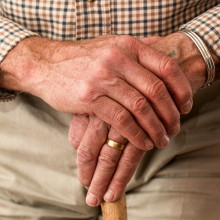
Why would fingers feel cold when they're warm?
Chris - It sounds quite likely, actually Katrina, that this is a form of neuropathy.
The sensation of pain and temperature in the body is conveyed by what we call C and A-delta nerve fibres. They're some of the tiniest nerve fibres in the body. They measure less than 1 micron or 1,000th of a millimetre across. For some reason that we don't thoroughly understand, if you injure them or injure a nerve, or you have certain conditions like diabetes or you take certain drugs to treat other conditions, this can sometimes damage these nerve fibres. When they are injured, they don't regrow or regenerate very well.
As a result, what can happen is that you can get a condition called causalgia or another related condition called allodynia, and this is where patches of skin which are supplied by these sensory fibres can become excruciatingly painful when the stimulus applied to them is one that would be completely innocuous normally. In other words, a stroking sensation can be misinterpreted as an extremely painful sensation.
This can occur secondarily to an injury. If people break their wrist for example, especially elderly people and they fall over, they can sometimes damage the nerves in their wrist, and this can result in damage to those sensory nerve fibres, and can produce these similar sorts of sensations under certain circumstances.
Unfortunately, it's very hard to treat. There are some drugs that can be used and these include amitriptyline in very low doses. This is an anti-depressant in high doses, but at low doses can be good for these sorts of neuropathic pains, and other drugs like gabapentin also does the same sort of thing, and it might be worth seeing a neurologist to see if they can help her. It's also worth getting this checked out properly anyway, just in case there's anything else going on that we might be missing, some other related signs that might point towards another disease that might be causing this. But I hope you can get it sorted out soon.
Does Vegetable matter have any intelligence?
Ginny - That's an interesting question. So, I guess it depends on how you define intelligence. In the way of problem solving, and flexibility of thinking, I would say probably not really, but there are things that plants can do that seem intelligent. So, there are types of creeper that manage to grab hold of other plants and climb up them, and you use them for support. That seems quite clever and I've seen time lapse videos of those where you can see the creepers sort of spiralling around and reaching for something to hold on to.
There's also the fact that when you plant a seed, the roots always know to grow downwards and the shoots know to grow upwards, and that's because of are some chemicals in the plant that tell it which way gravity is, and that allows it to know which way up to grow. So you don't have to worry about which way up you're planting your seeds. So, there are things plants can do that do seem quite clever and quite intelligent so, yes!
Chris - Do you have any intelligent vegetables in your garden to tell us about, Simon?
Simon - Well, I was thinking of the Venus flytrap.
Ginny - Of course! Well Venus flytraps are very clever. They've got hairs on the inside of the trap part. What's particularly clever about them is that they don't get triggered if just one hair is touched and that's to save energy because it's quite energetically expensive for them to close. And if they did it every time a leaf fell on them or a drop of rain or something, that will be a waste. So they only trigger if two of the hairs are brushed in quick succession because that's quite a good indication that there's something moving on the inside and it's a good idea to close and trap it.
Chris - So I guess it is a sort of intelligence because they're summating or mixing together two different signals from two different hairs to work out when to do that behaviour. So I guess that's a reasonable example, Simon.
Simon - Okay, that's cool.
Chris - You know, of course, why they do that?
Simon - Because it's very poor nutrition in the ground.
Chris - Yes. These plants are set to acquire their nutrition from the air. Meaning, that their lunch delivers itself part and parcel straight on to their leaves, and as you say, these sorts of plants grow in areas where the soil is extremely poor, often bogs and marshes where they can't compete very easily for nutrients from the water in the soil. So as a result, they actually trap things from the air which are rich in nitrogen and phosphorus i.e. living matter and they ingest it into themselves and make it part of themselves. Great question.
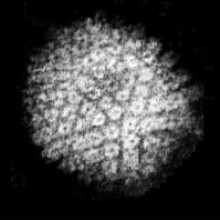
18:14 - Vaccine for herpes
Vaccine for herpes
Using an approach that might also prove successful against HIV, scientists in the US have developed a vaccine for the herpes simplex virus that causes cold sores and genital lesions.
Previous efforts to develop vaccines to protect people from these viruses, which infect more than 80% of the population, have not been successful.
Part of the reason is that, once an individual is infected, the virus retreats inside the nervous system, lurking in just its DNA form beyond the reach of the immune system. From this "latent" state, which persists for a person's lifetime, the virus periodically reactivates, producing infectious skin lesions that can transmit the agent to other individuals.
So the key to effective vaccination is to prevent the virus getting into the nervous system in the first place.
But therein lies the problem, because the very parts of the body that the virus has evolved to infect first, chiefly the mucous membranes of the mouth and genital tract - which are also richly supplied with sensory nerve cells - are normally no-go areas for virus-targeting CD8 T lymphocytes that can provide protection. And so initial vaccination attempts, while very effective at marshalling an immune army, were incapable of deploying the troops to the tissues most in need of defence.
Now two Yale scientists may have found a way to solve the problem. Haina Shin and Akiko Iwasaki, writing in Nature, call their approach "prime and pull".
Put simply, they first vaccinate by administering a weakened form of herpes to the skin. This drives an immune response to the virus, including production of key CD8 virus-combating T cells. They then "pull" these cells to the genital tract by administering, 5 days later, a dose of a pair of chemical "chemokine" signals called CXCL9 and CXCL9. These chemicals are used naturally by the immune system to target cells to tissues.
The result, in groups of experimental mice used by the researchers, was the accumulation of long-lived herpes-recognising memory T cell "sentries" within the genital tracts of the animals.
When these mice were then subsequently exposed, up to 3 months later, with what would otherwise have been a potentially lethal dose of a naturally-occurring herpes simplex virus strain, the animals all survived. Control mice, that had been vaccinated via the skin but had not received the pull signals administered genitally, had mortality rates of almost 50%.
Moreover, checks on the nervous systems of the vaccinated mice showed that, compared with the controls, the levels of virus reaching these sites were orders of magnitude lower.
According to Shin and Iwasaki, "a single topical treatment with the chemokines applied vaginally can provide superior protection against genital herpes by preventing the spread of the infection from the mucosa into neurones."
They also hint at the tantalising possibility that this same strategy might work with HIV too, arresting the virus before it gains access to the immune cells it needs to penetrate in order to initiate an infection...
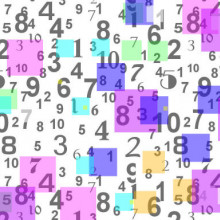
Is there a googol of anything?
Matt - A googol is a great number in that, it is a number that exists just because it has a nice name. There's nothing that we really have a googol of, but someone thought, "wouldn't a 1 with 100 zeros be a great number?" so they called it a googol. You could hear him emphasising gooGOL because it's spelled G O O G O L. The Google search engine is named after this but they spelled it differently. He's absolutely correct. If you're going to try to count objects, you won't find a googol of anything. So, even going right up to number of protons in the universe, which I think is - physicists argue between 1079 to 1081, so it's a 1 with somewhere between 79 and 81 zeros. But I have found one thing which we have more than a googol of in the Universe.
Chris - Well, should we ask Ginny if she can guess what it is?
Ginny - I don't know. I mean, I was thinking about neurons because they make an awful lot of connections, but I think when we are thinking about this, it probably wouldn't be quite that many, even if you include all the animals on the Earth.
Chris - 1011 nerve cells in the brain, 1,000 connections per nerve cells per brain, so that would probably be about 1014; so we're still a long way short of Matt's googol...
Matt - Actually, you're not far off from what I decided on, because when you're talking about connections, well, suddenly, you're looking at different ways of combining things. And so I looked at how many ways you can shuffle a pack of cards. So if you got a pack of 52 cards and you shuffle it, you can work out there's about 1067, It's 8 times 1067 ways to shuffle a pack of cards, which is a lot more than the number of grains of sand in the Sahara. In fact, if you've got a pack of cards with just 27 cards, you would have about 1028 different ways to shuffle them. If you want a googol, if you get a pack of cards with 70 cards - so you're going to need your normal pack and then get 18 from a pack maybe with a different colour on the front or the back so you can tell them apart - if you shuffle 70 cards, there's a googol of possible ways to arrange them!
Chris - Beautiful. I was thinking of a similar example, Matt, because I was looking at the power of passwords on the internet. Someone was asking a question on our forum and they were discussing the power of encryption and saying, "if I took a brute-force attempt to crack a password just by taking random choices, how many possible combinations of a password encrypted with a certain number of bits of encryption?" And you end up with something which will take trillions of centuries to solve and the number of solutions I think is way more than a googol.
Matt - Yes, and again, you're looking at number of possible combinations. So in fact, a password is pretty close to a pack of cards because you've got the alphabet, upper and lower case and then you do actually get extra symbols, and bits and pieces. So, if you've got a password of even just 8 characters, you're already up in the very high tens of thousands and much bigger than that, you're into millions, billions and well off very quickly!

Why does the moon sometimes appear out-of-place?
Chris - Well, let's zoom out for a bit and imagine you're off of the Earth and you're looking at the Earth and the moon from space. So you have the Earth as the bigger of the two bodies sitting, let's say, in the centre and the moon is in orbit around the Earth.
So the moon goes around the Earth, and the moon takes a month to do a complete lap of the Earth and get back to where it started: 28 days to do a complete orbit of Earth.
Also, inside the moon's orbit, the Earth is turning, and the Earth takes 24 hours to do a complete circle. So, therefore, as the Earth turns then it's going to see the moon from one side of the Earth go across the sky and then down on the other side. So, you're going to see the moon rise and set. But because the moon is also doing a lap around the Earth, the moon is going to appear at different points in the sky at different times of the day and night. So sometimes the moon will be up during the day.
Alan - So we see the Sun and moon at the same time?
Chris - Exactly; and so it's all to do with where we are in that so-called lunar cycle, which takes 28 days.

Are humans the only picky eaters?
Ginny Smith answered this question...
Ginny - Well, there are animals who are very fussy. For example, pandas only live off bamboo, so they'll only eat that one thing, but I think what he was really asking is whether there are animals like humans where certain individuals do and don't like particular foods. And when I looked into this, I found many more reports of this in pet animals than in wild animals. There are lots of people out there who report cats who will only eat one brand of cat food and dogs who leave certain bits of their kibble.
So, I was thinking it may be that we notice it more in pets than in wild animals because we spend more time with them or it may be something that only happens when food is plentiful. So, you can imagine that even a child who hates broccoli, if it was the only thing available for them to eat, they'd probably eat it.
So it could be that picky eaters only really exist when there's plenty of food around...
How does bleach bleach things?
Chris - Bleach is a fairly common word which is used to describe a range of different things. Some forms of bleach and the household bleach that you put down the loo and stuff has usually got a lot of chlorine in it. In fact, the active chemical is a substance called sodium hypochlorite. It's the same stuff that they put in swimming pools. Other forms of bleach include hydrogen peroxide - the stuff that you bleach your hair with and you can also use for mouthwash and teeth whitening, and say, sterilising your contact lenses for example. But they're called bleaches because they can react with things to take the colour out of them like hair. Now the way it works is that these molecules are reactive. They're oxidising agents and things that have colour are usually big, chunky molecules that have lots of electrons going around the molecule, and when light comes in, the light waves which are little packets called photons interact with the electrons in substances and certain colours of light will be preferentially absorbed by those electrons whilst other colours will be reflected. So when you see something and it looks say, red, the reason it looks red is because all of the light hitting it is being absorbed by the molecules except the red colours which are being reflected back to you. When you mix a certain chemical with these oxidising agents like hypochlorite or contact lens solution hydrogen peroxide, the oxidising effect breaks open the molecule, damaging it or affecting its structure in some way, so that the electron cloud which was doing that absorbing now changes its shape. And that has the effect of stopping the chemical from absorbing certain colours. So it goes white, instead of it absorbing certain colours and not others, now it reflects everything back at you and when you mix all the different colours together, you see white. So basically, you're changing the chemical structure of the thing that was giving the substance its colour in the first place.
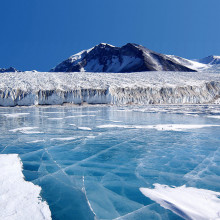
35:38 - Palm Trees on Antarctica - Planet Earth Online
Palm Trees on Antarctica - Planet Earth Online
with Dr James Bendle, University of Glasgow
Headlines like "Palm trees grew on Antarctica" abounded when climate scientists recently found evidence that the southernmost continent was once a very different world to the one we know now.
The research was reported in the journal Nature and is part of an international project to examine the Earth's climate during the Eocene period between 34 and 56 million years ago. This is because by looking back into the past, they are examining the potential future of climate change. Planet Earth podcast presenter Sue Nelson met up with one of the paper's authors, Dr James Bendle from the University of Glasgow, in a suitably balmy location...
James - We're in the Royal Botanic Gardens in Glasgow and we are in an area where there are tree ferns and we're surrounded by palm trees. It is probably 22/23 or so degrees centigrade and it is very humid and very warm.
 Sue - It's extremely warm and sticky and probably about as far from Antarctica as you would think.
Sue - It's extremely warm and sticky and probably about as far from Antarctica as you would think.
James - Yes, but if you went back in time 50 million years or so to the edge of the Antarctic you would look out on an array of vegetation that would look very much like this and you would probably be experiencing very similar temperatures.
Sue - How do you know this?
James - I took part in an expedition two years ago - an ocean drilling programme expedition to the margin of the Antarctic, an area called Wilkes Land. We drilled down through four kilometres of water and a kilometre of sediment and then recovered rocks and sediments from a period called the early Eocene, 50 million years ago. It's a period of time that is being studied by climatologists as an analogue for where we might be going in the future. It was what we call the Greenhouse World. There were very high levels of CO2 at that time. We didn't know much about the Antarctic until that expedition. Some of the results that we found, some of the headline results that we're now publishing, show that there was an incredible subtropical assemblage of vegetation on the margin of the Antarctic.
Sue - And was this known before?
James - No, not from the east Antarctic. The interesting thing is that we've recovered pollen and that's work that has been led by our colleagues in Germany, in Frankfurt, and at Glasgow we're working together with colleagues in the Netherlands and we've been looking at these molecular fossils, so organic compounds that are preserved in the same sediments. The vegetation assemblage tells us that it was this subtropical world. We also recovered the pollen of plants called Bombacaceae which are very characteristic rainforest trees with huge splayed trunks at the bottom.
Sue - How long did this tropical period of Antarctica last?
James - We only see the really warmth-loving species like the palm trees and the Bombacaceae on the Antarctic coastline during the peak warmth of the early Eocene. Within a few million years they disappear and they get replaced by Nothofagus which is a southern beech tree, more like the temperate vegetation you might see in New Zealand. This was existing in the mountains but it came down and took over the coastlines as the climate was cooling. The climate was cooling at that time because Tasmania and Australia break away from the Antarctic - we get an opening up of an ocean gateway and new cold ocean current surrounding the Antarctic and the climate starts to cool.
Sue - And then it heads towards millions of years later more like the Antarctic that we know today?
James - Yeah, then by 34 million years before the present we see another really fast step wise cooling and the continent glaciates and it loses its vegetation.
Sue - So now that you know then what Antarctica was like all that time ago and at a time when its carbon dioxide levels were high or similar to what they are now, are you effectively seeing the future of Antarctica like that again?
James - If we reached CO2 emissions that were similar to that time and we let the climate system and the vegetation in Antarctica get to equilibrium then, yes, eventually. It might take several thousand years or so but, yes, that is the direction in which we will travel in if we continue with unabated emissions.
Sue - When you were doing this research and it was probably cold, icy, could you envisage that you would uncover a world that is actually far more like this stuffy, steamy, tropical plant house that we're in now?
James - A couple of times we had to move away from the area that the ship was drilling in because we had had quite large icebergs that were coming too close to the ship, so we were in that southern ocean, big ocean swirls, grey skies, really cold, icebergs around... But then when you are drilling through these geological sediments you are effectively becoming a time traveller and it is amazing now that we have the data after several years of work to look at that data and to image this world where it was - it never got below about 10 degrees centigrade in the winter, it was at least as warm as 20 degrees in the summer, maybe warmer, and then really I think aesthetically it's the vegetation assemblages knowing that there was palm trees and these Bombacaceae trees and tree ferns is just an amazing thing to think about.

Why don't women go bald?
Ginny Smith answered this question...
Ginny - Women can go bald, is the first thing I should say. There are various illnesses. One is called alopecia universalis which is thought to be an autoimmune disease which attacks the hair follicles and can cause you to lose all your hair including eyelashes, eyebrows, everything, and that affects both men and women. But if we're talking about male pattern baldness which affects up to 80% of Caucasian men by the time they're 70, so a lot of men. You're right. It doesn't affect women quite the same way and this is because it's caused by a male hormone.
It's genetic and can be inherited from either parent, contrary to popular belief. But it's caused when you have high amounts of dihydrotestosterone, which is a derivative of testosterone, which, as we all know, is in much higher concentrations in men than in women. This causes the hair follicles to atrophy. They actually shrivel up and the hair produced then becomes progressively smaller and thinner and finer until it's practically invisible or it may even disappear completely.
Hormones do also play a role in women. So, sometimes people experience hair loss during pregnancy, menopause, anytime when hormone levels may vary. But as I said, it's mainly testosterone that's the culprit, so that's why it affects men much more that women.
When will we find out if pi is normal?
Matt - That is a very good question because at the moment, we don't know whether or not pi is normal. Normal has a very specific definition in maths, so if we say a number is normal, it means that any string of digits is equally likely to appear in its decimal expansion. And so, the decimal places of pi go on forever and they never repeat, but we don't know effectively how well distributed they are if you go far enough down. And we've checked trillions and trillions of digits and it's been normal all the way so far. But we can't guarantee that it will continue to be normal after that. And so, I suspect it's going to be a while because currently don't have any really good mathematical techniques to explore that far into pi or to find some way to pin down to show why it is or it isn't normal. But hopefully one day, people will develop some new mathematical ideas and will be able to answer that question.
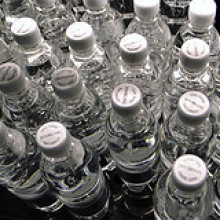
Can reusing plastic bottles alter fertility?
Chris - This is an interesting and emerging area because the question everyone is beginning to consider (I was going to say the question on everyone's lips, but that's a bit of too bad a pun for drinking bottles). It's becoming clear that the bottles and the plastics that we use in our everyday lives contain chemicals which we now regard as endocrine disruptors. These are chemicals that can mimic the behaviour of certain hormones in the body especially female hormones.
One of these chemicals is called bisphenol A, and there are also chemicals leaking out of other types of plastic which get into the contents. I did read one paper which was published a couple of years ago by a guy called Martin Wagner who's a researcher at the University of Frankfurt in Germany on this subject and what he and his team did was to go to their supermarket and they bought a very large cluster of plastic bottles containing mineral water.
This wasn't mineral water that had been made artificially, this really was mineral water out of the ground. They emptied all of the water out of the bottles and they refilled the bottles, and they also took a second group of glass bottles and filled both with laboratory grade water which they knew was pure.
They put into the bottles some snails. They're in fact snails called New Zealand mud snails and they kept them in the bottles, feeding them in ideal circumstances for a couple of months, and they then totted up the reproductive rate of the snails. The animals kept in the glass bottles had half as many embryos as the animals that were kept in the plastic bottles and it was a statistically significant result.
Martin Wagner's interpretation is that there is something leaking out of the bottle which is getting into the water which is acting as an estrogenic-like chemical in these snails and making them more reproductively active and therefore, the extension to that is that if we're using the same product, we're almost certainly exposing ourselves. But obviously, we're not a snail, so you've got to interpret it slightly cautiously.
At the same time, returning to Rosemarie's question, if you re-use a plastic bottle, is that a risk? Well actually, you'd argue, the more times you use a plastic bottle, the less risk there is because by the time the plastic bottle has been used to the point where it falls apart, you've actually drunk all of the endocrine disruptors that were in it, so the concentration is getting lower and lower all the time, so it's getting less and less bad for you. The more you use it, it's probably worse for you when you have a new one.
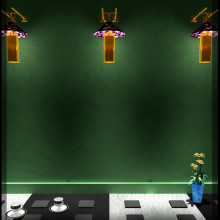
What's my lifetime chance of winning the lottery?
Matt - Let's see if we can work this out fairly quickly. If you start playing when you're 16 and you cease playing when you're 86, is that reasonable? It will give us 70 years of non-stop playing. So that's about one hundred games per year. So, you'll end up doing about 7,000 games across your lifetime. What you need to do is, if it's originally 1 in 14 million, we'll divide that by the 7,000 games you're going to play because you'll have 7,000 chances to win and you end up with 2,000. So, you need to have 2,000 lifetimes to expect to win the lottery.
Trevor - That's more alarming I think and then actually saying 14 million to 1, so I'll enjoy sharing that in work tomorrow. The second part is also to do with the lottery. If you do the numbers 1 - 6 in the lottery. I think people who do that are being silly on the basis of the first 3 balls come out and on the night and it's say, number 1, number 2, number 3, the chances of 4 to 10 coming out next diminishes. Is that the case?
Matt - If you look at the lottery as a whole, from before you start pulling out the balls in the particular draw, any list of numbers you pick is equally likely. So you can pick 1, 2, 3, 4, 5, 6. You can pick random numbers like 12, 37, 14, or other random numbers - every single string of numbers has exactly the same chance of coming up. What you're saying now is, once you start drawing the balls out, how does the probability change? What people often forget with things in probability because as humans, we love to assign meaning and pattern to things, is that if you draw out one number, it doesn't change the odds of the next number at all, other than you can't draw the previous number that just came out. So actually, your odds aren't going to change as you're drawing those numbers out as you go along.
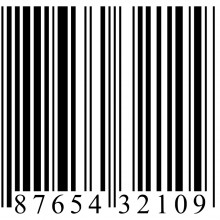
50:35 - Barcodes, Check Digits and Error Correction
Barcodes, Check Digits and Error Correction
with Matt Parker, Queen Mary, University of London
Chris - During the show listeners have been getting in touch with their shopping product barcodes, Matt asked for the first numbers of the barcode and then managed to predict the last number. So Matt, time to reveal all. How do you do it?
Matt - I'm doing exactly the same calculation that the checkout does at the supermarket when you scan a product because we deliberately put a pattern into the digits in barcodes. So what you need to do is as the person is calling out the numbers, initially, you need to remember and then add together every second digit. So ignore the first one, remember the second one, ignore the 3rd one, add on the 4th one. And so, you add every 2nd digit together, you then get this total, you multiply that by 3 and then you add on the the digits you skipped over, and the grand total in all UK product barcodes, if you add every 2nd digit, multiply by 3, add on the other digits, it's always a multiple of 10. And so, if I do that calculation, I know the last digit is whatever is required to bring the total up to the nearest whole multiple of 10.
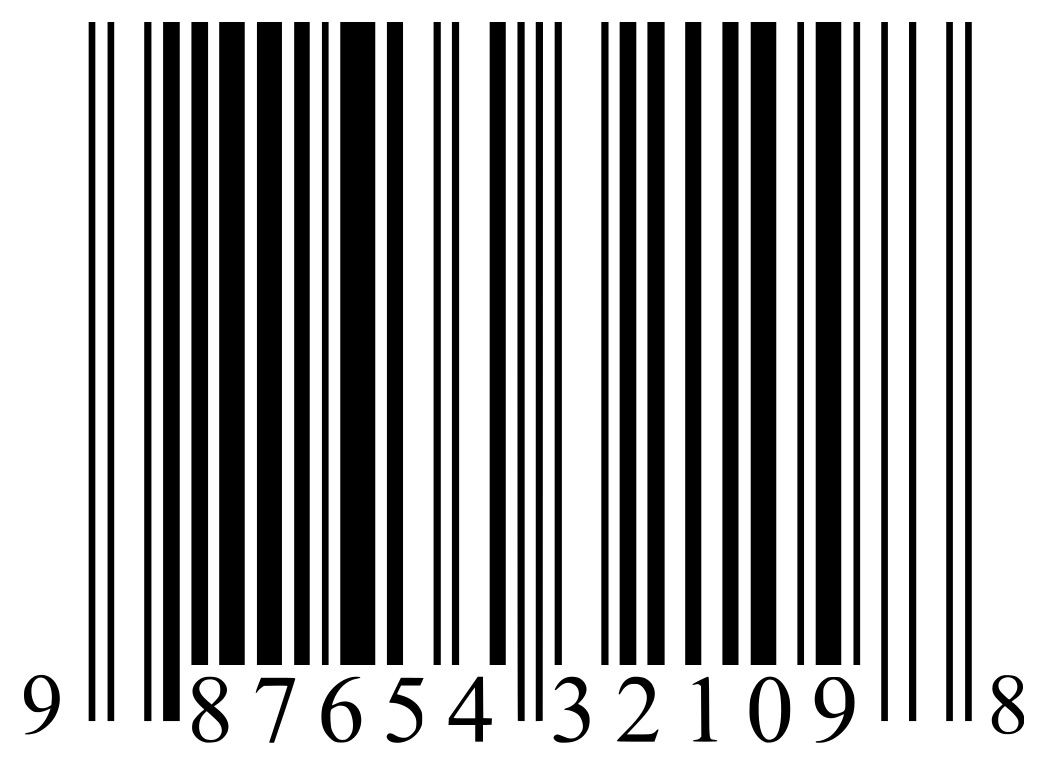 If you were listening earlier, I sounded a bit uncertain when I predicted the last digit was a zero on someone's barcode and that's because I already had a multiple of 10 without the final digit. But thankfully, it was a zero because it didn't have to increase it. It's a bit tricky in your head to keep track of two different totals and then multiply one by 3 and add them together. It depends how much free time you're prepared to throw at learning it, I guess. I am a hoot at parties, but a lot of people wonder why is that pattern there?
If you were listening earlier, I sounded a bit uncertain when I predicted the last digit was a zero on someone's barcode and that's because I already had a multiple of 10 without the final digit. But thankfully, it was a zero because it didn't have to increase it. It's a bit tricky in your head to keep track of two different totals and then multiply one by 3 and add them together. It depends how much free time you're prepared to throw at learning it, I guess. I am a hoot at parties, but a lot of people wonder why is that pattern there?
It's actually because of the very last digit in your barcode. All the other digits are the actual product code and the last digit is added on afterwards, just to make that pattern work. It's called a check digit and because you have this check digit, that completes the pattern.
A checkout can double-check the pattern is there when it scans the barcode and it knows when the laser reader has misscanned a barcode. So this way, we catch most of the mistakes that would otherwise be entered when barcodes are misscanned at the checkout.
Chris - So, this is effectively a way of making sure that the scan has occurred correctly by just reading one number rather than having to read the whole lot again. You've actually got the whole thing in one number in order to check your work.
Matt - Yep, so it can check straightaway because people get upset if it was just entering a number without checking if it's right or not. You might scan a packet of crisps and get charged for a big screen television, and people get very emotional about these things, unless it's the other way around I guess. But this way, the checkout knows if it's a real barcode number or if it's just a random misscanned number.
Chris - It's not just barcodes that this science applies to though, does it because this same technology can be used to rebuild data that's missing from things. We famously on the Naked Scientists drilled a hole in a CD and it still played beautifully. Because of this sort of redundancy, you can use the numbers in these check digits to work out what would've been there previously.
Matt - Yes, CDs use what I think is the Reed-Solomon form of error correction. Text messages do this, digital television does this. They all work pretty much like a Sudoku where with the Sudoku, if you know the mathematical patterns in a grid of numbers, you can recreate all the missing numbers just using the patterns.

54:02 - Was pre-historic cave art only done in caves or is that the only place untouched enough for them to be preserved?
Was pre-historic cave art only done in caves or is that the only place untouched enough for them to be preserved?
Diana - I'm Diana O'Carroll and I'm a PhD research student and Naked Scientist. I think that the sort of art found in caves was almost certainly done out in the open. Unfortunately we can't prove this, but we can look at how cave art does survive and what other things humans were up to at the time.
The kind of art the questioner is talking about tended to appear around the Upper Palaeolithic era in Europe (which was from about 50-60,000 years ago). And these include drawings of bison or people, dots and silhouettes of hands and even a few seemingly random scribbles, with some of the more famous examples found at places like El Castillo or Chauvet or Lascaux. The problem with paintings is that often they can be washed away by rain, or they can be blown away by wind carrying tiny particles which abrade the surface of the rock. Hannah - So caves provide protection from the outside elements. Other than wind and rain, are there other ways caves protect prehistoric artwork?
Diana - As for caves, providing the rocks they're made of aren't too acidic, they're great areas for preserving both organic and inorganic organic materials - so that includes the charcoal-based outlines and the pigments, which were usually made of earth minerals like red or yellow ochre. Caves tend to stay at the same temperature, they have constant humidity and sometimes contain limited amounts of oxygen - all of which creates a fairly stable environment in which to preserve whatever people have left behind. More importantly, caves tend to fill up or become blocked, meaning that people can't get inside them and destroy the art. My favourite example is the Grotte Cosquer, which is so tricky to access that several divers died trying to navigate its underwater entrance - but its remoteness kept the paintings safe for thousands of years.
Hannah - That was Diana O'Carroll from Cambridge with her favourite prehistoric artwork in Marseille, France. But not all prehistoric art is restricted to caves. Evan AU, Clifford K and Cifrum add on the forum, alongside Diana, that stone carving and sculpture are another form of human art. And at Ayers rock in Australia petroglyphs exist , shallow carvings of abstract lines or animals and strange, unidentifiable creatures. These are thought to be around 40, 000 years old and found across other parts of Australia, Africa, Asia, the Americas as well as Europe, somehow managing to survive out in the open.










Comments
Add a comment